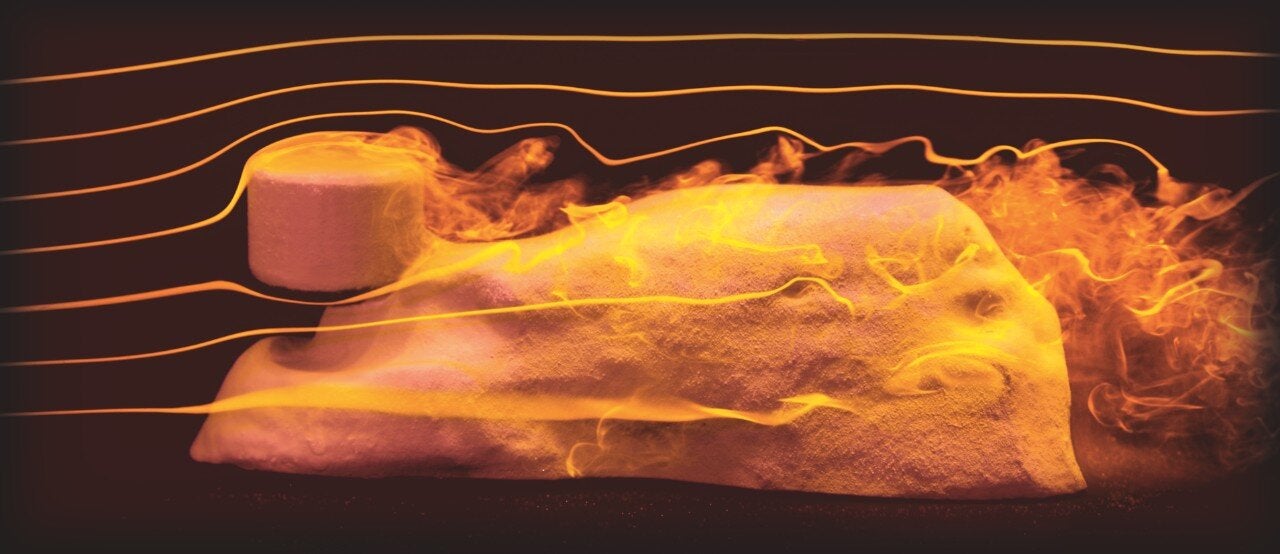Giza Great Sphinx likely sculpted by wind long before ancient Egyptian artists gave it form
‘Our results provide a simple origin theory for how Sphinx-like formations can come about from erosion’
Your support helps us to tell the story
From reproductive rights to climate change to Big Tech, The Independent is on the ground when the story is developing. Whether it's investigating the financials of Elon Musk's pro-Trump PAC or producing our latest documentary, 'The A Word', which shines a light on the American women fighting for reproductive rights, we know how important it is to parse out the facts from the messaging.
At such a critical moment in US history, we need reporters on the ground. Your donation allows us to keep sending journalists to speak to both sides of the story.
The Independent is trusted by Americans across the entire political spectrum. And unlike many other quality news outlets, we choose not to lock Americans out of our reporting and analysis with paywalls. We believe quality journalism should be available to everyone, paid for by those who can afford it.
Your support makes all the difference.The Great Sphinx of Giza was likely first shaped by wind movements long before ancient Egyptian artists sculpted the iconic statue to its final form, a new study suggests.
The research, published in the journal Physical Review Fluids, showed that surprisingly Sphinx-like shapes can come from materials eroded by fast flowing wind.
“Our findings offer a possible ‘origin story‘ for how Sphinx-like formations can come about from erosion,” study co-author Leif Ristroph from the New York University said.
Archaeologists have long speculated on the enigmatic orgins of the Great Sphinx – an ancient limestone marvel near the Great Pyramid in Giza with the body of a lion and the head of a pharaoh, believed to represent Pharaoh Khafre.
The statue which stands at a height of about 20m (66 ft), spanning a length of 73m (240 ft), is the largest monolith statue in the world.
Its exact age and purpose are still subjects of debate but it is generally believed to have been built during the Old Kingdom of Egypt, around 2500 BC, but some theories suggest it may have been older.
In the study, scientists replicated conditions that existed 4,500 years ago – when the Giza Sphinx was built – to show how wind moved against rock formations.
Researches hope to better understand how unusual rock formations called yardangs found in deserts which result from wind-blown dust and sand.
They hoped to study how the Great Sphinx may have originated as a yardang and later sdetailed by humans into the form of the widely recognised statue.
Scientists took mounds of soft clay with harder, less erodible material embedded inside – mimicking the kind of terrain that exists in northeastern Egypt.
They then washed these formations in a tunnel with a fast-flowing stream of water to replicate wind that carved and reshaped them.
“The flow of a water tunnel mimics the prevailing winds of Giza, and three-dimensional optical scanning records the history and evolution of the shape as it erodes,” researchers noted.
They eventually reached a Sphinx-like formation from the featureless mound.

Harder material in the mound became the “head” of the lion and eventually many other features such as an undercut “neck,” “paws” and arched “back” developed.
“There are, in fact, yardangs in existence today that look like seated or lying animals, lending support to our conclusions,” Dr Ristroph said.
The results suggest that the ancient peoples of Egypt may have encountered formations in the deserts that could have led them to envision and further sculpt such a fantastic creature.
Researchers believe the findings will also be useful to geologists since it reveals factors that affect rock formations.
“The unexpected shapes come from how the flows are diverted around the harder or less-erodible parts,” Dr Ristroph said.

Join our commenting forum
Join thought-provoking conversations, follow other Independent readers and see their replies
Comments